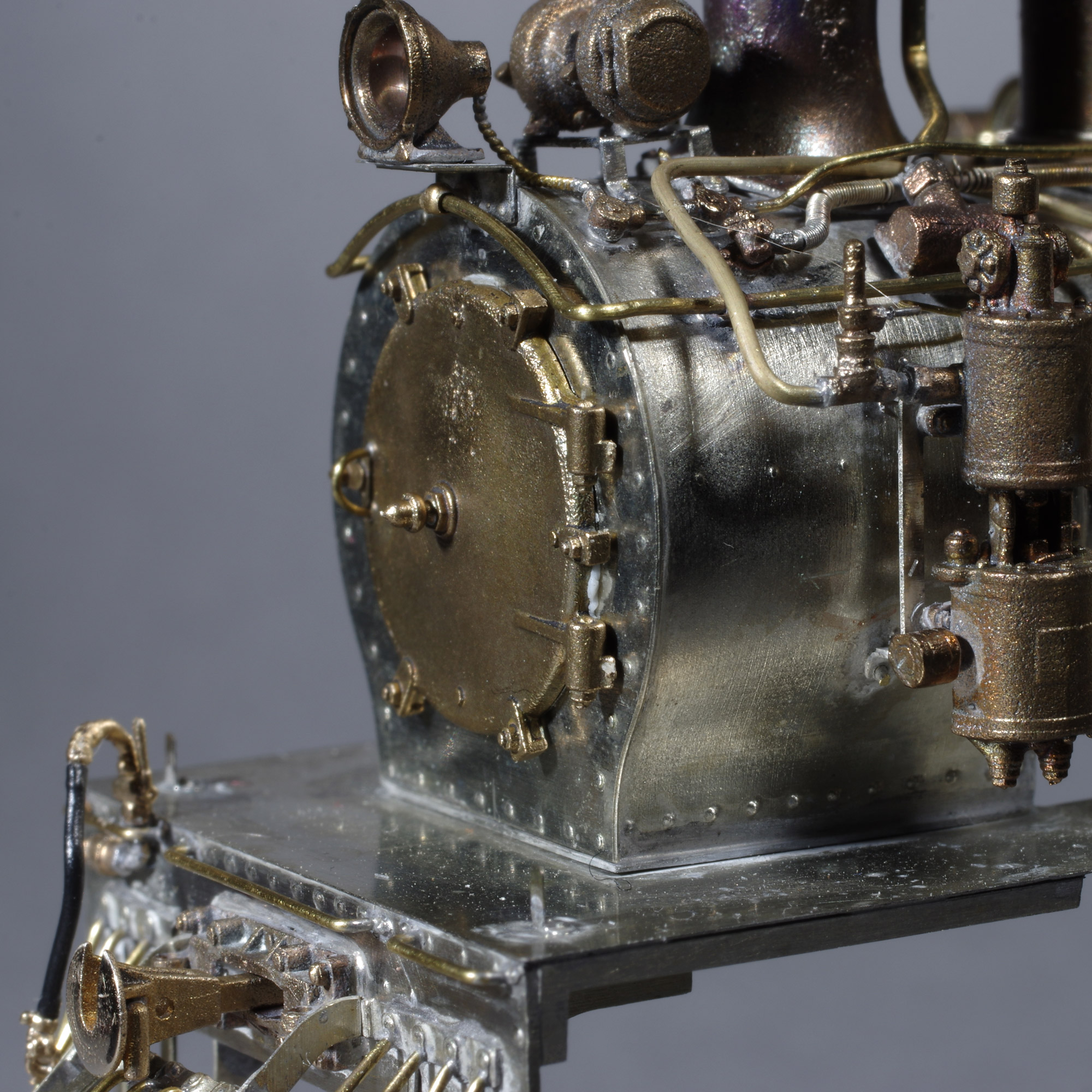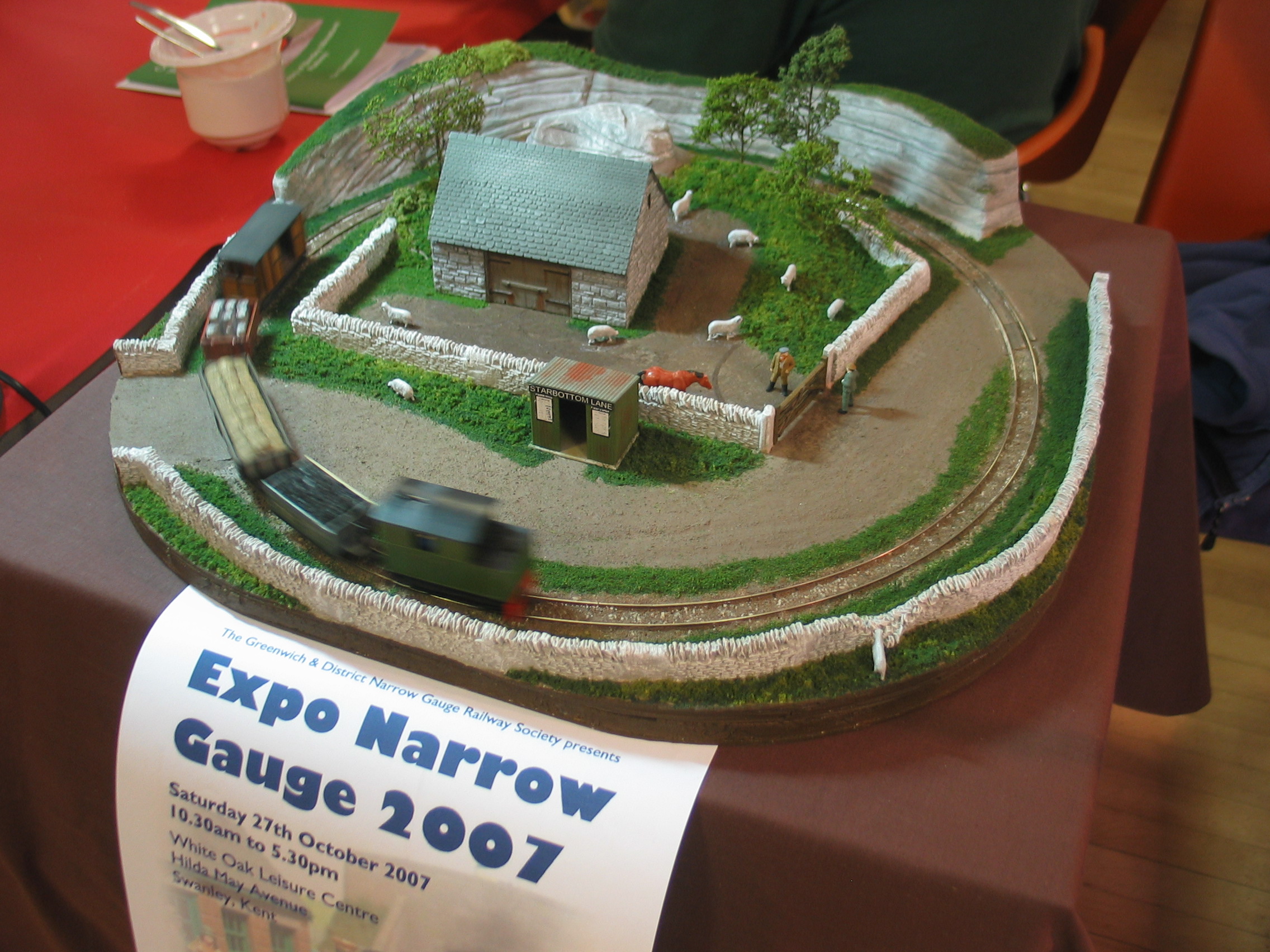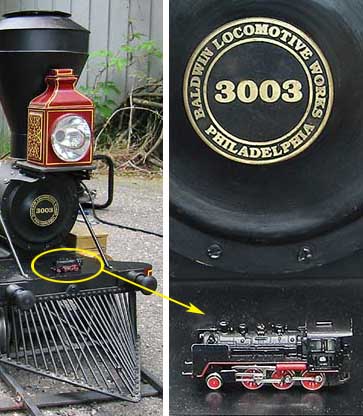|
Sn3½
In rail transport modelling, Sn3½ is a scale/gauge combination derived from S scale to represent narrow gauge track by using gauge track (the same as HO gauge). The scale is 1:64. Sn3½ is popular in South Africa, Australia (particularly Western Australia, Queensland and Tasmania where narrow gauge systems exist) and New Zealand. Sn3½ is very rarely or never used for modelling in other countries with 3 foot 6 (1067mm) gauge railways such as Japan, Taiwan, Indonesia etc. Track As track scales down to 16.5mm at 1:64, modelers use HO gauge track (which represents Standard gauge at 1:87 scale) on Sn3½ layouts. New Zealand Sn3½ is the primary scale for modeling New Zealand's narrow gauge 3 ft 6 in railways. The majority of rolling stock available, are white-metal kits, making them considerably more expensive and heavier than other scales and countries. Many of these kits are highly detailed. Buildings are generally hand-made and track (HO gauge track) can either be ... [...More Info...] [...Related Items...] OR: [Wikipedia] [Google] [Baidu] |
List Of Narrow-gauge Model Railway Scales
__FORCETOC__ Railway modelling has long used a variety of scales and gauges to represent its models of real subjects. In most cases, gauge and scale are chosen together, so as to represent Stephenson standard gauge. By choosing a smaller gauge than this for a particular scale, the model represents a narrow-gauge example. Such gauge and scale combinations are of course used for the deliberate modelling of particular narrow-gauge subjects, where the choice of subject is behind the choice of combination. Narrow-gauge modelling has also become especially popular from the purely modelling aspects: it combines a conveniently visible large scale that is easier to work on, with a narrow model gauge that allows tighter radius curves and so fits layouts into smaller spaces. This has been a particular reason in Europe where, houses being generally smaller than in the US, there is rarely space for 0 gauge and even 00 gauge is restricted in the size of curves. At times, particularly in the ea ... [...More Info...] [...Related Items...] OR: [Wikipedia] [Google] [Baidu] |
S Scale
S scale (or S gauge) is a model railroad scale modeled at 1:64 scale, S scale track gauge (space between the rails) is 22,48 (22,5) mm, 0.885 in. S gauge trains are manufactured in both DC and AC powered varieties. S gauge is not to be confused with '' toy train standard gauge'', a large-scale standard for toy trains in the early part of the 20th century. History S scale is one of the oldest model railroading scales. The earliest known 1:64 scale train was constructed from card stock in 1896. The first working models appeared in England in the early 20th century. Modeling in S scale increased in the 1930s and 1940s when CD Models marketed 3/16" model trains. American Flyer was a manufacturer of standard gauge and O gauge "tinplate" trains, based in Chicago, Illinois. It never produced S scale trains as an independent company. Chicago Flyer was purchased by A.C. Gilbert Co. in the late 1930s. Gilbert began manufacturing S scale trains around 1939 that ran on three rail "O" gauge tr ... [...More Info...] [...Related Items...] OR: [Wikipedia] [Google] [Baidu] |
Model Railroad Scales
Rail transport modelling uses a variety of scales (ratio between the real world and the model) to ensure scale models look correct when placed next to each other. Model railway scales are standardized worldwide by many organizations and hobbyist groups. Some of the scales are recognized globally, while others are less widespread and, in many cases, virtually unknown outside their circle of origin. Scales may be expressed as a numeric ratio (e.g. 1/87 or 1:87) or as letters defined in rail transport modelling standards (e.g. HO, OO, N, O, G, TT and Z.) The majority of commercial model railway equipment manufacturers base their offerings on ''Normen Europäischer Modellbahnen'' (NEM) or National Model Railroad Association (NMRA) standards in most popular scales. Terminology Although '' scale'' and ''gauge'' are often confused, ''scale'' means the ratio between a unit of measurement on a model compared with a unit of measurement in corresponding full size prototype, while ''g ... [...More Info...] [...Related Items...] OR: [Wikipedia] [Google] [Baidu] |
HO Gauge
HO or H0 is a rail transport modelling scale using a 1:87 scale (3.5 mm to 1 foot). It is the most popular scale of model railway in the world. The rails are spaced apart for modelling standard gauge tracks and trains in HO.NMRA"Modeling Scales: Scale and Gauge. ''NMRA.org''. December 2000. Retrieved 4 March 2010. The name H0 comes from 1:87 scale being ''half'' that of 0 scale, which was originally the smallest of the series of older and larger 0, 1, 2 and 3 gauges introduced by Märklin around 1900. Rather than referring to the scale as "half-zero" or "H-zero", English-speakers have consistently pronounced it and have generally written it with the letters HO. In other languages it also remains written with the letter H and number 0 (zero); in German it is thus pronounced as . History After the First World War there were several attempts to introduce a model railway about half the size of 0 scale that would be more suitable for smaller home layouts and cheape ... [...More Info...] [...Related Items...] OR: [Wikipedia] [Google] [Baidu] |
Rail Transport Modelling Scales
Rail transport modelling uses a variety of scales (ratio between the real world and the model) to ensure scale models look correct when placed next to each other. Model railway scales are standardized worldwide by many organizations and hobbyist groups. Some of the scales are recognized globally, while others are less widespread and, in many cases, virtually unknown outside their circle of origin. Scales may be expressed as a numeric ratio (e.g. 1/87 or 1:87) or as letters defined in rail transport modelling standards (e.g. HO, OO, N, O, G, TT and Z.) The majority of commercial model railway equipment manufacturers base their offerings on ''Normen Europäischer Modellbahnen'' (NEM) or National Model Railroad Association (NMRA) standards in most popular scales. Terminology Although '' scale'' and ''gauge'' are often confused, ''scale'' means the ratio between a unit of measurement on a model compared with a unit of measurement in corresponding full size prototype, while ''g ... [...More Info...] [...Related Items...] OR: [Wikipedia] [Google] [Baidu] |
HOn3½ Gauge
HOn3 gauge represents the modelling of gauge railways in HO scale, resulting in a model track gauge of (the same as H0m and TT scale). Trains are operated using direct current or Digital Command Control over realistic-looking two-rail track. Railways that use the gauge can be found in New Zealand, South Africa, Indonesia, Australia, Taiwan, Japan and others. Manufacturers of Australian outline models in this size include Haskell Models, Wuiske Models, Black Diamond, PGC, Southern Rail and SDS Models. The main focus for Australian narrow gauge modelling has been the large Queensland railway system. More recent releases have included Tasmanian and Western Australian prototypes. In New Zealand, the scale has a few niche manufactures. CMD models and SARModel produce South African and Zimbabwean (Rhodesia Railways) HOn3 models. Most Japanese and Taiwanese HO scale models are made to run on 16.5mm gauge track and are made to 1:80 scale (Tomix, Kato and Tenshodo for Japan bei ... [...More Info...] [...Related Items...] OR: [Wikipedia] [Google] [Baidu] |
W Locomotive
W, or w, is the twenty-third and fourth-to-last letter of the Latin alphabet, used in the modern English alphabet, the alphabets of other western European languages and others worldwide. It represents a consonant, but in some languages it represents a vowel. Its name in English is ''double-u'',Pronounced in formal situations, but colloquially often , , or , with a silent ''l''. plural ''double-ues''. History The classical Latin alphabet, from which the modern European alphabets derived, did not have the "W' character. The "W" sounds were represented by the Latin letter " V" (at the time, not yet distinct from " U"). The sounds (spelled ) and (spelled ) of Classical Latin developed into a bilabial fricative between vowels in Early Medieval Latin. Therefore, no longer adequately represented the labial-velar approximant sound of Germanic phonology. The Germanic phoneme was therefore written as or ( and becoming distinct only by the Early Modern period) by ... [...More Info...] [...Related Items...] OR: [Wikipedia] [Google] [Baidu] |
List Of Rail Transport Modelling Scale Standards
This page lists the most relevant model railway scale standards in the world. Most standards are regional, but some have followers in other parts of the world outside their native region, most notably NEM and NMRA. While the most significant standardised dimension of a model railway scale is the gauge, a typical scale standard covers many more aspects of model railways and defines scale-specific dimensions for items like catenary, rolling stock wheels, loading gauge, curve radii and grades for slopes, for instance. Scale standards NEM MOROP (the European federation of national model railway associations) is a European organisation which publishes NEM-standards. NEM-standards are used by model railway industry and hobbyists in Europe. The standards are published in French and German and both versions have an official status. Unofficial translations in English from third parties exist for certain NEM-standard sheets. Model railway scales and gauges are standardized in NEM 0 ... [...More Info...] [...Related Items...] OR: [Wikipedia] [Google] [Baidu] |
Rail Transport Modelling
Railway modelling (UK, Australia, New Zealand, and Ireland) or model railroading (US and Canada) is a hobby in which rail transport systems are modelled at a reduced Scale (ratio), scale. The scale models include locomotives, rolling stock, streetcars, rail tracks, tracks, Railway signal, signalling, Crane (machine), cranes, and landscapes including: countryside, roads, bridges, buildings, vehicles, harbors, urban landscape, model figures, lights, and features such as rivers, hills, tunnels, and canyons. The earliest model railways were the 'carpet railways' in the 1840s. The first documented model railway was the Railway of the Prince Imperial (French: Chemin de fer du Prince impérial) built in 1859 by emperor Napoleon III for his then 3-year-old son, also Napoleon, in the grounds of the Château de Saint-Cloud in Paris. It was powered by clockwork and ran in a figure-of-eight. Electric trains appeared around the start of the 20th century, but these were crude likenesses. M ... [...More Info...] [...Related Items...] OR: [Wikipedia] [Google] [Baidu] |
Normen Europäischer Modellbahnen
german: Normen Europäischer Modellbahnen (french: Normes Européennes de Modélisme ferroviaires, literally European Standards for Model Railways, known in the UK as Normal European Modelling Standards (NEM Standards)) are standards for model railroads, issued by the MOROP. Standards The NEM standards are defined and maintained by the Technical Commission of the MOROP in collaboration with model railroad manufacturers. The NEM standards define the model railroad scales and guide :Model railroad manufacturers, manufacturers in creating compatible products and assist modellers in constructing model railroad layouts that operate reliably. The standards cover areas like suggested grade (slope), grades, railroad switch, turnout radii, wheel profiles, coupling designs and Digital Command Control (DCC) and are mostly scale specific. A fundamental principle in NEM standards are compromises in the exact scale reduction ratio in order to favour operational reliability of model railroad syst ... [...More Info...] [...Related Items...] OR: [Wikipedia] [Google] [Baidu] |
Rail Transport Modelling
Railway modelling (UK, Australia, New Zealand, and Ireland) or model railroading (US and Canada) is a hobby in which rail transport systems are modelled at a reduced Scale (ratio), scale. The scale models include locomotives, rolling stock, streetcars, rail tracks, tracks, Railway signal, signalling, Crane (machine), cranes, and landscapes including: countryside, roads, bridges, buildings, vehicles, harbors, urban landscape, model figures, lights, and features such as rivers, hills, tunnels, and canyons. The earliest model railways were the 'carpet railways' in the 1840s. The first documented model railway was the Railway of the Prince Imperial (French: Chemin de fer du Prince impérial) built in 1859 by emperor Napoleon III for his then 3-year-old son, also Napoleon, in the grounds of the Château de Saint-Cloud in Paris. It was powered by clockwork and ran in a figure-of-eight. Electric trains appeared around the start of the 20th century, but these were crude likenesses. M ... [...More Info...] [...Related Items...] OR: [Wikipedia] [Google] [Baidu] |





